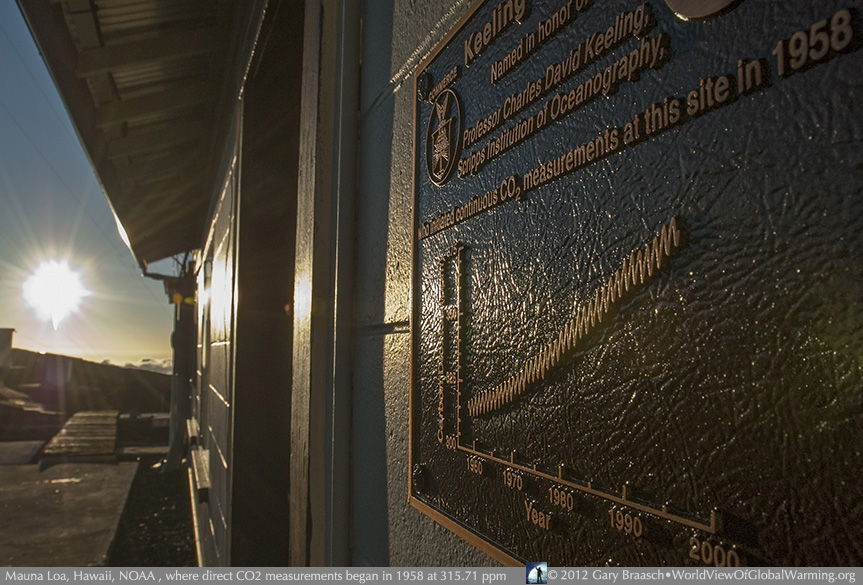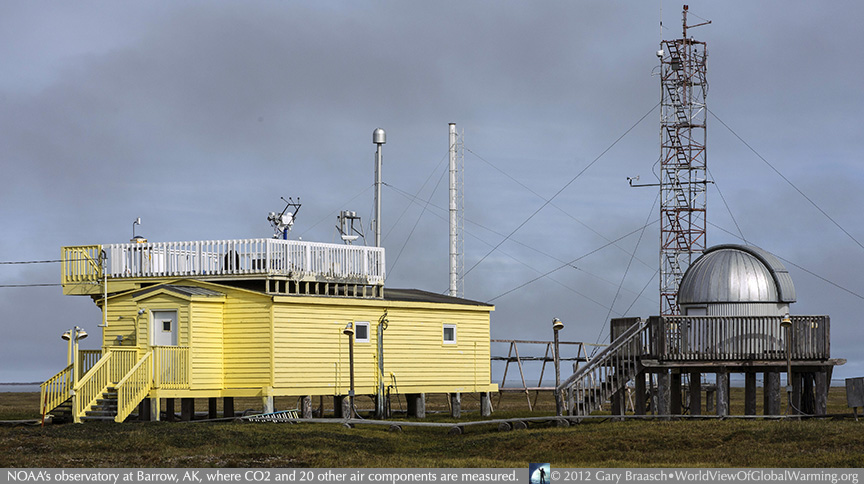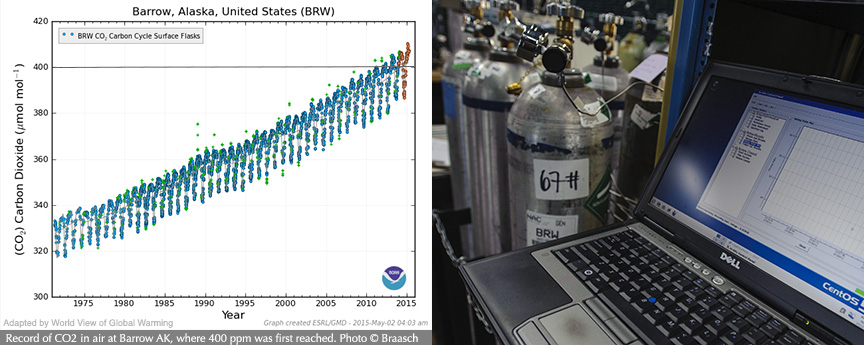Climate Photo of the Week
Carbon dioxide levels in the atmosphere reach a worldwide average above 400 ppm
The carbon dioxide output of the world’s fossil fuel burning, cement manufacture and agricultural practices is pushing the atmosphere more and more into dangerous territory. One strong measure of this is that for the first time the average of all of NOAA's 40 CO2 measuring sites showed a concentration above 400 parts per million (ppm) during March. Scientists have repeatedly and with more detail warned that pushing up to and past 450 ppm CO2 in the atmosphere will lead to many severe and irreversible climate disruptions, beyond what we are seeing today. The level of 400 ppm has been accepted as a significant marker of how much CO2 and other greenhouse gases are being spewed into the air yearly.

Lead NOAA scientist for CO2 observations, Pieter Tans, said in a press release, “This marks the fact that humans burning fossil fuels have caused global carbon dioxide concentrations to rise more than 120 parts per million since pre-industrial times. Half of that rise has occurred since 1980.”

Individual measuring locations reached this grim benchmark sooner — notably the Barrow, Alaska, observatory which first surpassed 400 ppm in the Spring of 2012, and the main site on Mauna Loa, Hawaii, which is currently recording a concentration of nearly 404 ppm. Later this spring, as the northern hemisphere’s vegetation greens up and absorbs great quantities of CO2, the world average of the gas is expected to decrease, but with emissions continuing, next winter and early spring will bring another high level of CO2.

Carbon dioxide is measured directly at four baseline sites: Mauna Loa, where Charles Keeling first directly measured CO2 in the 1950s; Barrow; Tutuila American Samoa; and at the South Pole. The accuracy of these readings is tested by periodically measuring known quantities of CO2 kept in standard reference tanks in the labs. Worldwide coverage and comparison is insured by similar measurements at 40 ground, airborne, balloon, shipboard and tower CO2 measurement sites. Sealed flasks of air are sent from these locations for measurement at the NOAA Earth System Research Laboratory in Boulder CO to create the worldwide average.
This project would be impossible without scientists and observers around the world who have provided hundreds of scientific contacts and papers. See Background, Advisors, and Reference for documentation, funders and major advisors, without whom I could not complete the work.
World View of Global Warming is a project of the Blue Earth Alliance, Seattle Washington, a 501(c)3 tax-exempt organization. The project is supported entirely by donations, grants, and license fees for the photographs. Please see information about how to contribute.
For other information about Gary Braasch's climate change projects and books, please see the books Earth Under Fire and How We Know What We Know About Our Changing Climate, and the exhibit "Climate Change in Our World" at the Books and Exhibits link on the top menu of this page.
COPYRIGHT NOTICE:
Photography and text Copyright © 2005 - 2017 (and before) Gary Braasch All rights reserved. Use of photographs in any manner without permission is prohibited by US copyright law. Photography is available for license to publications and other uses. Please contact requestinformation@worldviewofglobalwarming.org. View more of Gary Braasch's photography here.


